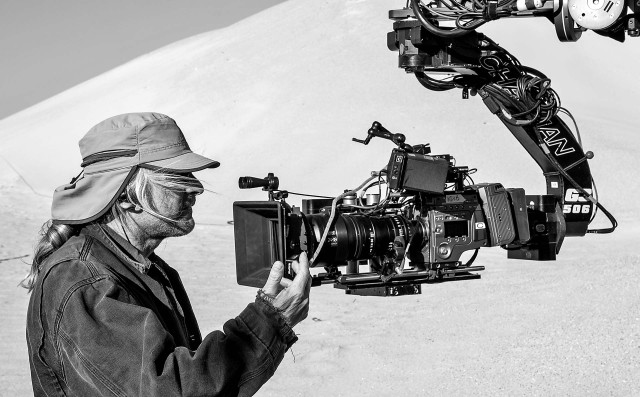
Claudio Miranda, ASC with Sony F65, Fujinon Premier 24-180 Zoom, Cinematography Electronics Cine Tape Measure, Chapman G3 Head. Photo © David James, Universal Pictures
This interview with Claudio Miranda, ASC is a sneak peak at one of the articles in Film and Digital Times’ April 2013 Issue 53.
JON FAUER: Oblivion will be the first release of a major motion picture shot with a Sony F65 camera. So far, few of us have seen its capabilities on a big screen. Tell us about the camera and lenses.
CLAUDIO MIRANDA, ASC: On Oblivion, we used the Sony F65. For lenses, on exteriors we used Fujinon Premier zooms. They are ridiculously sharp. They’re sharper than our primes. A zoom sharper than a prime? That’s incredible. Those Premier zooms are expensive but worth it. For interiors, when we needed a lot of stop, we used the ARRI/ZEISS Master Primes at T1.3.
Why did you need fast lenses?
We did something kind of unique in Oblivion. We were tired of blue screens. We knew what blue screens would mean to the production design of the set. There’s a scene in the movie with a building that’s up in the clouds. It’s an all-glass structure, very modern and very open, with very shiny surfaces. Usually, if you get a situation like that and you’re doing blue screens, VFX will say, “Okay, let’s take all the glass out.” In fact, that’s what they told us to do, “Take all the glass out and consider using more matte surfaces and get away from shiny things.” Because, with so much glass things get too shiny. When using blue screen the set just disappears and then they end up having to digitally reconstruct the set in post, which gets expensive.
We wanted to try something kind of different. Joe Kosinski (Director) and I were playing around with this idea on Tron. “For Oblivion, we had a 500 foot wide by 42 foot tall screen with 21 projectors. This gave us real-time 15K motion picture front projection.”
We sent a second unit to the top of a volcano in Hawaii for two or three weeks and they shot cloud formations from this high vantage point. We took all that footage and stitched the 3 cameras together and created this 15K image that would play live. Behind the actors was a real environment. The actors loved being in it. Because it was such an expensive thing and every stop counted, we used the Sony F65, at 800 ASA and I was shooting at T1.3-2.0 split. If I needed more stop, that would have doubled the projectors and all of a sudden that would have been 42 projectors, and that would not have made the producers happy.
The idea of going for 21 projectors to make this work was scary enough. But it was something special. You’re in that set and you could change the lighting anytime. You just call up a certain scene. You have a sunrise and you could put the sunrise on the left side, right side, anywhere you wanted. You could rotate the whole image around. You could move clouds if you wanted more on one side, or put them on the other side for a reflection somewhere else. And I could light with it, too. I could make a little hotspot on the top and have light pour in. It was very amazing to be in this glass world without a reflection problem.
The following “making of” video comes via YouTube and IGN:
The basic thing I had to get rid of was the camera’s reflection in the windows. But that was easy. The scene is really beautiful. There’s a shot where Tom Cruise is coming from inside and he goes straight outside and you totally believe he’s there.
Hang on a second. You were lighting the scene with the front-projected images?
Lighting by projection. That’s unique. I think the projection was doing 95 percent of the work.
How did you stitch projection together so it looked seamless?
PRG handled it. They have servers and seaming software. I think at one point they had 10 projectionists and it was a three week install. It was a big deal. We planned this for months in advance and I was drawing and sketching it out. But it was so worth it in the end.
It was also great in editorial. You’re not looking at blue screen shots. You’re looking at in-camera shots. I remember Tom Cruise saying that he loved being in this environment.
What was the front projection surface?
We had a seamless, painted white muslin, a single piece that was 500 feet by 42, wrapped around 270 degrees.
Where did you shoot this?
This was done in New Orleans. And then we also did some shooting in Iceland as well. The front projection was done in Baton Rouge at Celtic Studios. Everything had to be rigged from the floor because the ceiling wouldn’t hold the weight.
The projectors and all the equipment came from PRG?
PRG. Brian Edwards. They were good. PRG did the whole projection thing. They provided all the projectors and were in charge of all the media servers. The background was real-time. What’s unique about this job is that it’s totally in camera, which is very unusual.
How did you sync these projectors to the camera?
We didn’t need to. We just picked a frame rate that worked for the projectors and it was amazing. It seemed that cameras with physical shutters, and I’m not sure why, seemed to work completely, like the F65. Cameras with an electronic shutter didn’t work and I really don’t know why. We had the Sony F65 mechanical shutter set to 180 degrees. We never saw any issues. That kind of leaned me toward loving the fact that the F65 has a mechanical shutter.
What influenced your choice of F65 camera for Oblivion?
Originally Joe was wishing for a 4K release of Oblivion but that didn’t happen. A lot has to do with finances and time crunch. VFX said that if you need to release in 4K, it’s another month and a half of time they would need for rendering and pipeline and checking and all that kind of stuff. It was also a huge additional cost as well and the studio didn’t want to go for that, even though Joe was really pushing for that.
The Oblivion website says shot in 4K.
Shot in 4K. The DI was done in 2K and it is released in 2K. Yes, we shot in 4K. It’s all captured in Sony’s 4K RAW format. We have the full RAW so I guess with their new de-mosaicing you can now go 8K if you want. It’s all a matter of how you de-mosaic the image, but our original intent was 4K.
A lot of the VFX work was in 4K for some of the shots, for stabilization, for mattes or plates and sometimes they did work in 4K, but the final render was for speed, I must say the 2K image is very sharp. It’s nothing to be sneezed at.
The choice of the camera was originally for 4K. Were there any other factors in terms of the way it worked or looked?
Joe and I liked the way it looked. I think it suited this movie. Some of it is kind of clinical and Joe liked the Sony look on Tron. So he said, “Keep it going, let’s be on the cutting edge.” I shot camera tests. For Oblivion, the look of this movie was F65.
Describing a look from cameras and lenses can be almost like describing a wine. What is the particular look of a Sony F65?
It’s a little cleaner. It’s very resolute and it has a huge color gamut. All these new cameras need to be properly treated. There are certain advantages of Alexa on some shows and of F65 on others. I feel like I really have no allegiance toward any one camera. I just feel like a camera is used for the job.
But not many people feel that way. Some people say you can’t pry this or that camera out of their hands. Some people think the F65 is a huge data gobbler. But if your pipeline’s ready for it, it’s a good big thing. But people have to be a little bit prepared for it. One day I think we shot over 10 terabytes—in one single day. But properly treated, it’s really a great camera. There’s a huge dynamic range. It has all the things you want. It holds well in the highlights. It gives you a great base for being malleable. You have to know how treat it, how you shoot with it, just like any other camera. I think people are going to be blown away by Oblivion. I just finished the DI. It looks great. People come up like Brad Bird, who saw it in post, and he goes, “Wow. It looks amazing.”
I think this movie is going to give people good second thoughts about this camera. Our Sky Tower sequences, all done in-camera, look great. Iceland is stunning. That’s where we really wanted the 4K for the textures and what we got out of the camera was great: these beautiful exteriors in Iceland that we wanted to capture in full rez and background. When we saw it back in 4K it was stunning.
I imagine there was still value in the fact that you were capturing at a higher resolution and down rezzing. Did it have a different look than something that originates at a lower rez?
Yes. You always have a cleaner image starting from something that’s higher. The release of Oblivion is going to be in two formats. IMAX is going to go 1.89:1 and theatrical is going to be 2.40.
So on the F65 you just cropped?
For IMAX we protected the 1.89 headroom and cropped the sides because we knew this would be an IMAX release. And for widescreen, we used the side and cropped top and bottom. It was spherical lens format for both.
That leads me back to lenses because you talked about the Fujinon Premiers. Did you use those for the front projection?
No. For the front projection I needed to be at T1.4-2.0 split. I also want to keep the projected background a little bit softer. It worked a little bit better when it was slightly de-focused by having that shallow depth of field. Also I needed the stop. We did all that on Master Primes.
Most of the exteriors and some of interiors, when I could throw light in, were all done on the 4 Fujinon Premiers. They’re great lenses. I was shocked. I did not think of Fujinon for filmmaking. I thought of them for sports. They were pretty amazing lenses. They dealt with sun and flares really well. The 14.5-45 T2.0 is, for a zoom, pretty great engineering. I guess maybe it’s so sharp because these guys are so used to hitting a 2/3-inch sensor, that when they have to hit a 35mm size sensor, that must be easy for them. I’d be very interested in seeing more lenses from them. I don’t know if they’ll make primes but their zooms are outstanding.
With the ZEISS Master Primes, I love the 150 mm. That’s a freaking awesome lens. I’ve used them for a bunch of movies and I really love them. They’re not quite as sharp but sometimes I’m doing faces and stuff like that and it doesn’t need to be so crazy sharp. If I find any little sharpness problems, I’ll put the Fujinons on. The Fujinon Premiers are probably comparable to the Leica Summilux-C primes I would say.
Anyway, we had the four Fujinon Premier zoom lenses (14.5-45 T2, 18-85 T2, 24-180 T2.6, 75-400 mm T2.8-3.8) and we had all the Master Primes (12, 14, 16, 18, 21, 25, 27, 32, 35, 40, 50, 65, 75, 100, 135, 150 mm T1.3). I guess when you go to space in the movies you have to go wide angle. It’s kind of the law. So there’s one scene inside the space cockpit that we used a 12 mm Master Prime. It was a lot of fun. It always makes things look spacey.
Did you use any diffusion or nets or filters on the lenses?
No. I could always do that later. I always feel like I should capture for real and have a continuity for the whole thing because there were certain times when we were doing the ship flying sequences that had to be in blue screen and I could just deal with it in DI. So I shot clean. I’m always going to be at the DI, so if I need to, I can soften it or do something to it. Sometimes, if I need to soften an actress’ face, I can do it quickly in DI with an overlay on top.
What about data wrangling, data management with 4K files? What was the workflow on set and location?
Technicolor gave us their truck with a theater where we could watch dailies, conform for editorial, and do LTO backups as well.
Let’s talk about lighting and the style of the film. You mentioned words like clean and science fiction.
I like lighting from real sources. I don’t really like to force it too much. For the sky tower there’s a lot of light pushing in through the windows. I’m not really specific on seeing the actor. I just fill in a little bit if I need to. There’s one scene where we have a candle scene which is also great for these cameras. We put a candle in the middle and just called it “lit.” The one candle was lighting the whole thing. That scene was awesome.
I like to do lighting through windows. We had big windows for this glass tower, so I tried to make all the natural sources feel like it’s a real environment, that we weren’t singularly lighting people for their marks, let them run through the room and have real interaction. I do love that.
For this big scene with 500 feet of front projection, where did you put the lights if you couldn’t hang them?
Sometimes off camera. I would just bounce them on the muslin if I just need a little more push but I really lit it by the projection mostly. I think the projection was doing 95 percent of the homework. Lighting by projection. That was cool.
Claudio Miranda, ASC and DIT Alex Carr will will discuss their work on Universal Pictures’ “Oblivion” as part of the NAB Creative Master Series at NAB on Tuesday, April 9 from 11:45 am – 12:45 pm in Room S220. (Registration required: Flex or Smart Pass)
Jon Fauer will moderate the session on “Oblivion’s” cinematography and data wrangling. “Oblivion” is the first big-budget feature film to be shot with Sony’s F65. We are expecting a Sony 4K projector to show 4K dailies as well as clips from the film. Claudio will discuss shooting by candlelight, with front projection, and on location in Iceland. Alex will talk about working with F65 RAW files, on-set and near-set, and managing the data. The panel discussion will invite questions from the audience. “Oblivion” will be released the week following NAB in digital, 35mm and IMAX.

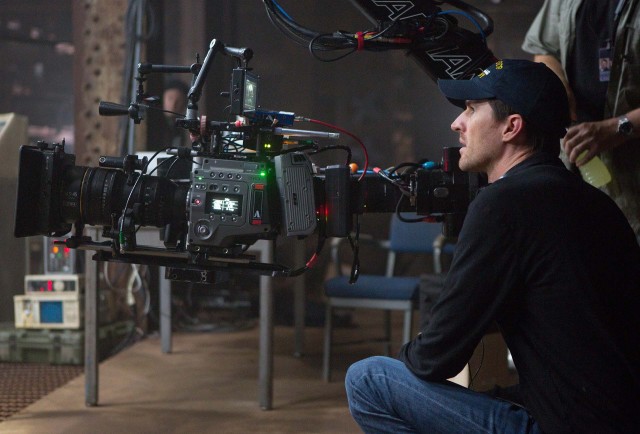
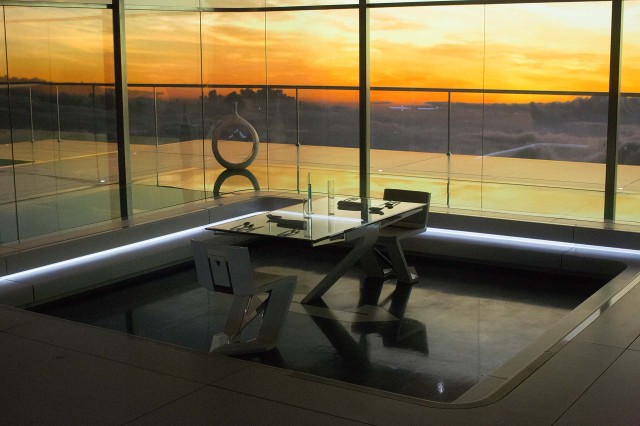
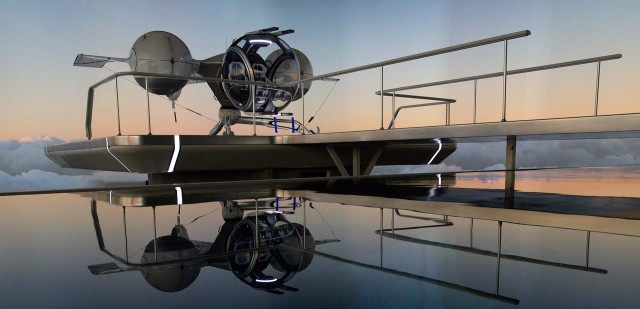
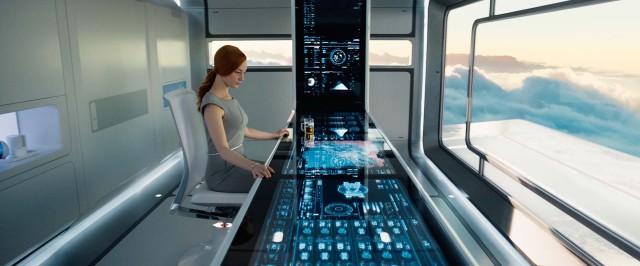








Excellent article Jon!
Mark Forman
Pingback: Behind The Scenes on Oblivion | Jonny Elwyn - Film Editor
Pingback: Projectors in ‘Oblivion’ | A.movie.Journey
Pingback: circa Scuole di effetti speciali a confronto: “Gatsby” contro “Oblivion” | italien post
Pingback: #3: Oblivion | The Dollar Theater